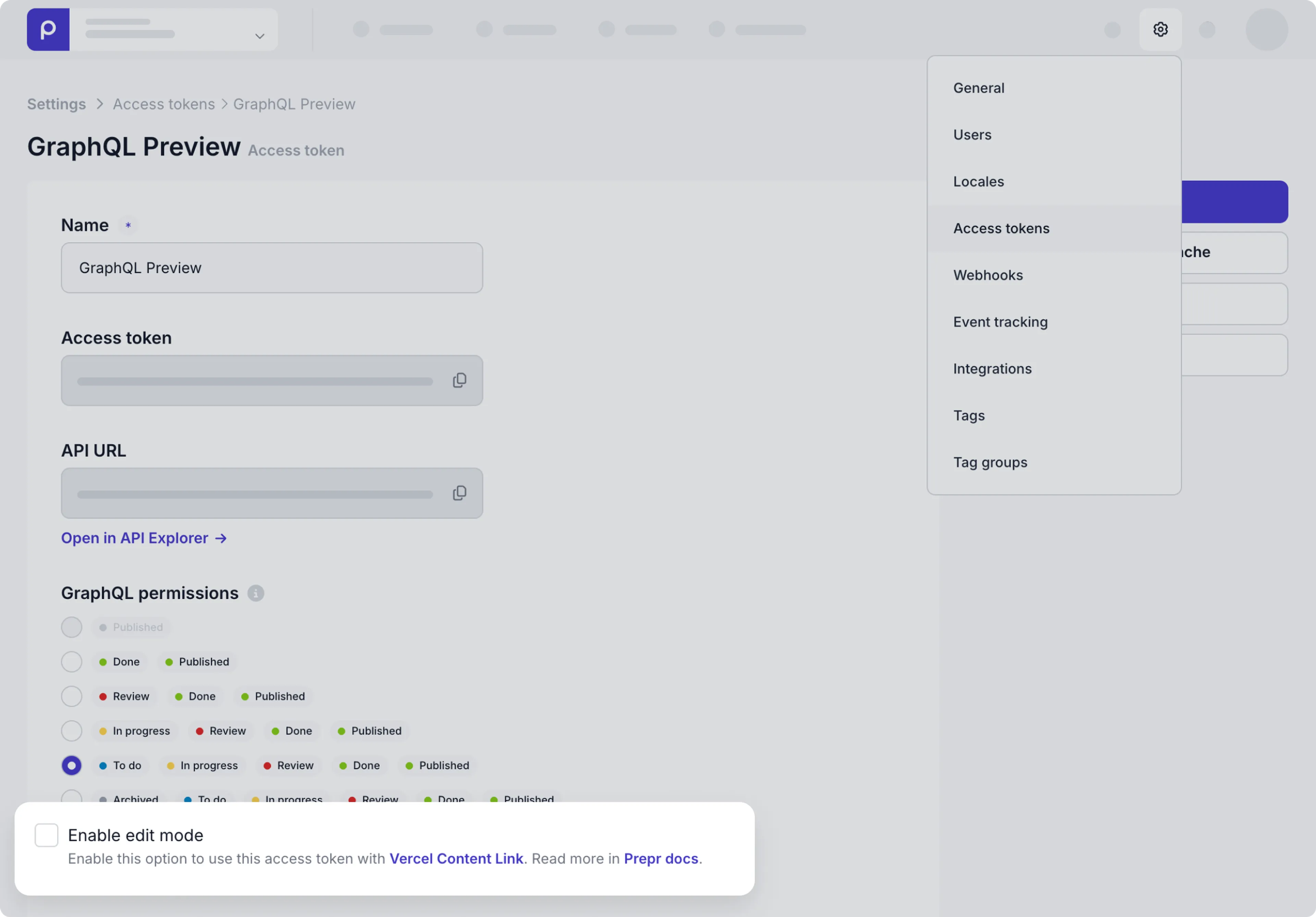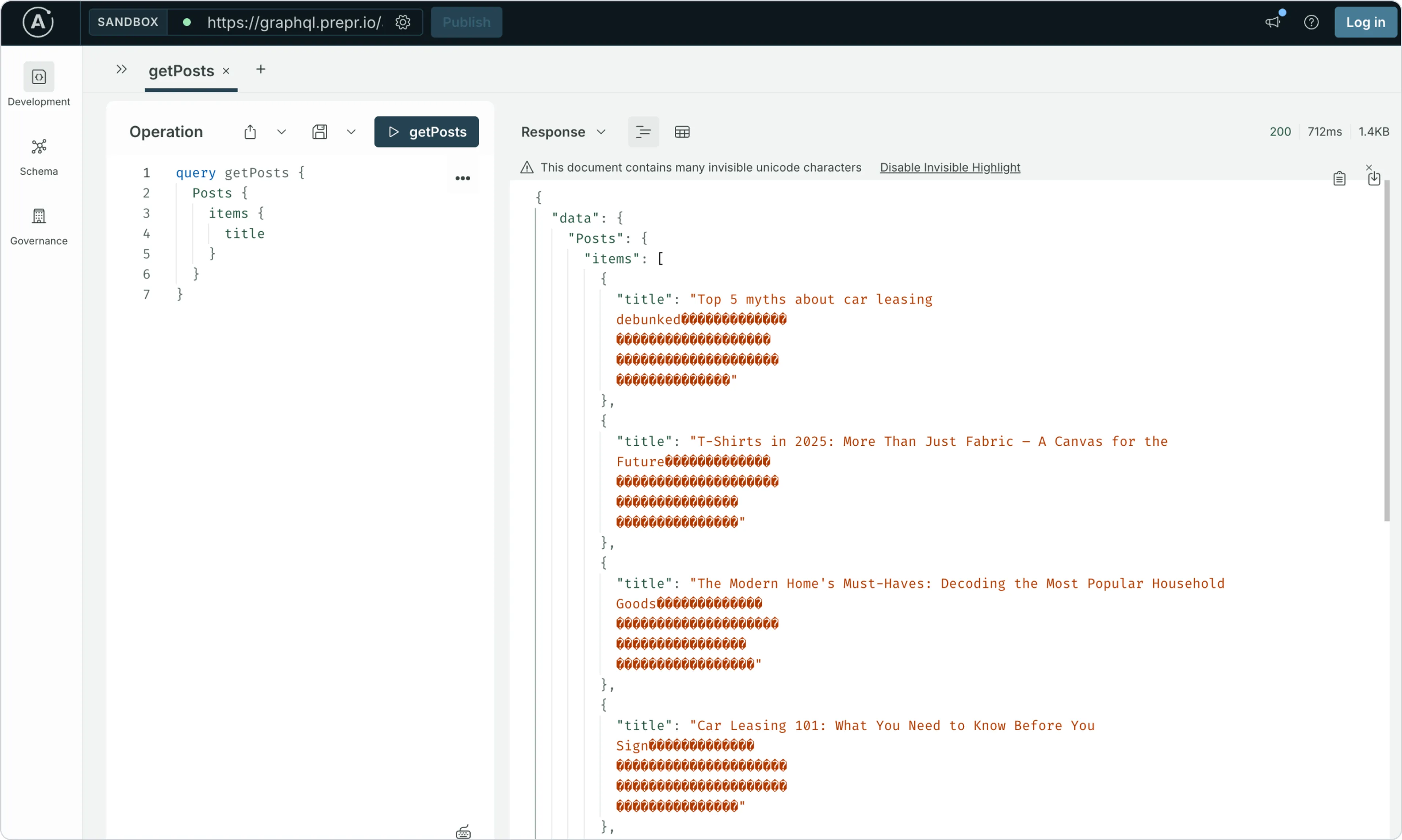Statuses and errors
This article describes the standard HTTP status and error codes the GraphQL API returns when resolving a query.
HTTP response status codes
The GraphQL API uses standard HTTP status codes to indicate whether a request is successful or not. In general, status codes within the 2xx range indicate a successful request. When you receive an HTTP status code different from 2xx, then you probably have one of the following issues:
- Client-side validation problems like an invalid query argument or access token (4xx HTTP codes).
- Server or connection problems (5xx HTTP codes).
| Status code | Description |
|---|---|
| 200 OK | The request is successful. However, the API response might contain an error. For example, if your query is too complex or contains typos, etc. |
| 401 Unauthorized | The access token is invalid. |
| 405 Method Not Allowed | The requested HTTP method is not supported for the specified resource. |
| 412 Precondition failed | There is an issue with the query, for example, there are non-UTF characters in the query or the actual query is too large. In the body of the response, you’ll see something like Query could not be compressed. Query limit is 27500 but length was 28196. This means the actual query is too big and you might need to compress it. |
| 429 Too many requests | You have exceeded the rate limit. |
| 5xx Internal Error or Service Unavailable | Something went wrong on the Prepr server side. Try your request again after a few seconds. |
| 5x3 Service Unavailable | In most cases this requests exceeds the edge rate limits. Try your request again after a few seconds. |
Example GraphQL errors
The GraphQL API also verifies if a request is syntactically correct and mistake-free in the context of a given GraphQL schema. When a query contains a mistake, an error message can be returned in the response.
See some known GraphQL errors below.
Example 1. When a query size exceeds the 8kb limit, you’ll see the following error message:
{
"errors": [
{
"message": "Syntax Error: Unexpected <EOF>",
"extensions": {
"category": "graphql"
},
"locations": [
{
"line": 1,
"column": 1
}
]
}
]
}Prepr limits a query size to a maximum of 8 kb to increase data retrieval performance from the cache. The limit cannot be adjusted at the moment. We recommend that you use fragments for large requests. Alternatively, some libraries will automatically remove unnecessary whitespace and comments, like GraphQl Query Compress .
Example 2. When a wrong typecast is specified in a query (Int/String/etc.), the GraphQL API returns the following error message:
{
"errors": [
{
"message": "Variable \"$id\" of type \"Int\" used in position expecting type \"String\".",
"extensions": {
"category": "graphql"
},
"locations": [
{
"line": 1,
"column": 21
}
]
}
]
}Follow the tips in the error message to resolve an issue.
Example 3. When a request contains a field that is not available in the schema definition, the following error message will be returned:
{
"errors": [
{
"message": "Cannot query field \"content_ref\" on type \"Blog\".",
"extensions": {
"category": "graphql"
},
"locations": [
{
"line": 5,
"column": 3
}
]
}
]
}Check out your schema definition and update the requested field name to the correct one.
Example 4. When a typo is made in a property name, you’ll get the following error message:
{
"errors": [
{
"message": "Cannot query field \"id\" on type \"Blog\". Did you mean \"_id\"?",
"extensions": {
"category": "graphql"
},
"locations": [
{
"line": 3,
"column": 8
}
]
}
]
}Follow the tips in the error message to resolve an issue.
Invisible unicode characters in the API response
If you see invisible unicode characters in the API response, it means the Enable edit mode is checked in the access token you’re using.

These characters are Stega-encoded strings which produce invisible output to allow content editors to use the Vercel Edit Mode. When you turn on edit mode in an access token, Stega-encoding serializes metadata into invisible UTF-8 encoded characters and appends them to string values.
